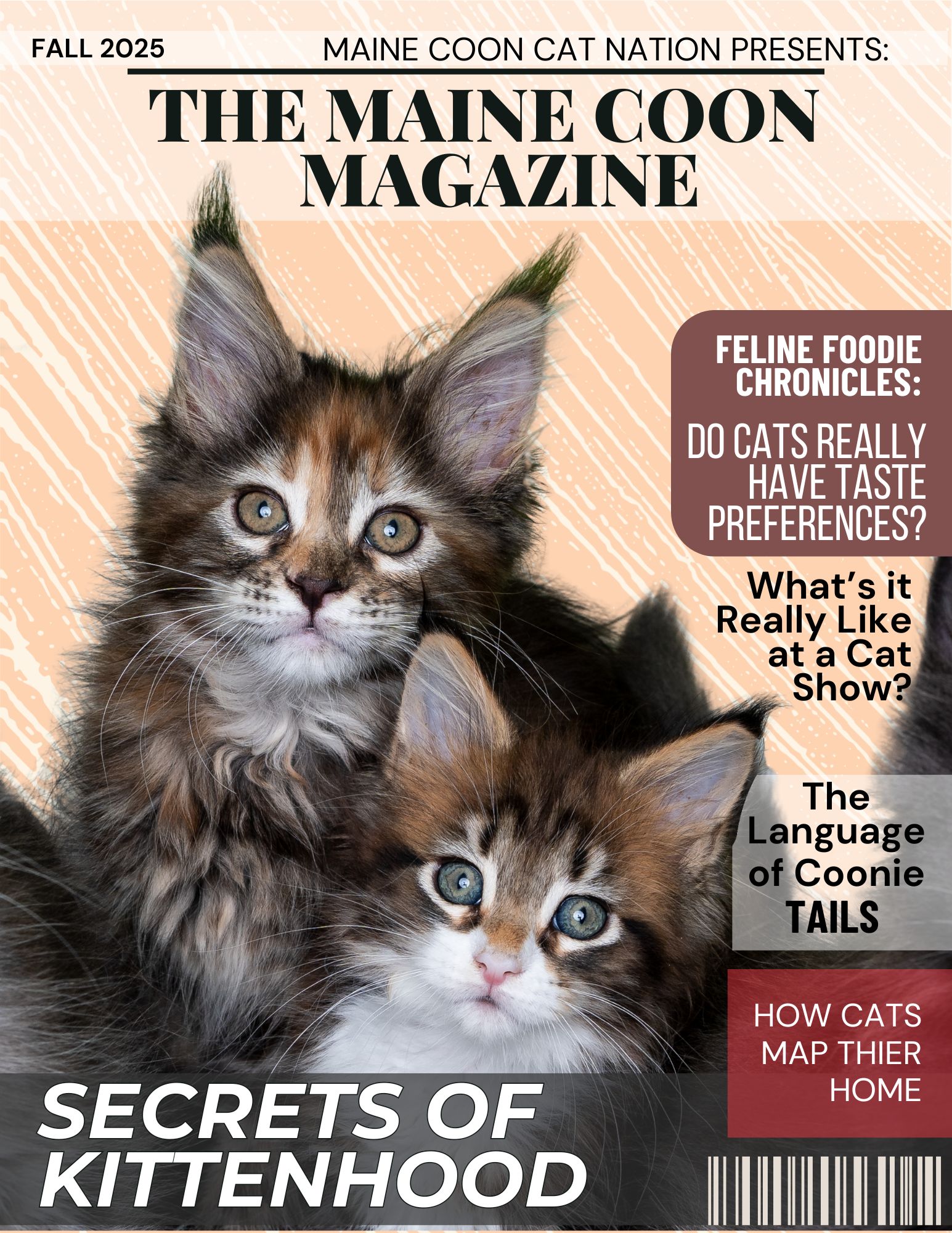- Home
- Maine Coon Grooming
- Sanitary Shave/Trim
Cat Sanitary Trim: A Simple Grooming Solution
I remember the first time I heard about a cat sanitary trim for my Coonie, Alice. It wasn’t until a routine vet check-up that the idea was even mentioned.
Alice was as calm as ever, the picture of health, and I was feeling pretty good myself as we chatted with the vet. At some point during the visit, the vet casually offered, "Would you like us to do a sanitary trim?"
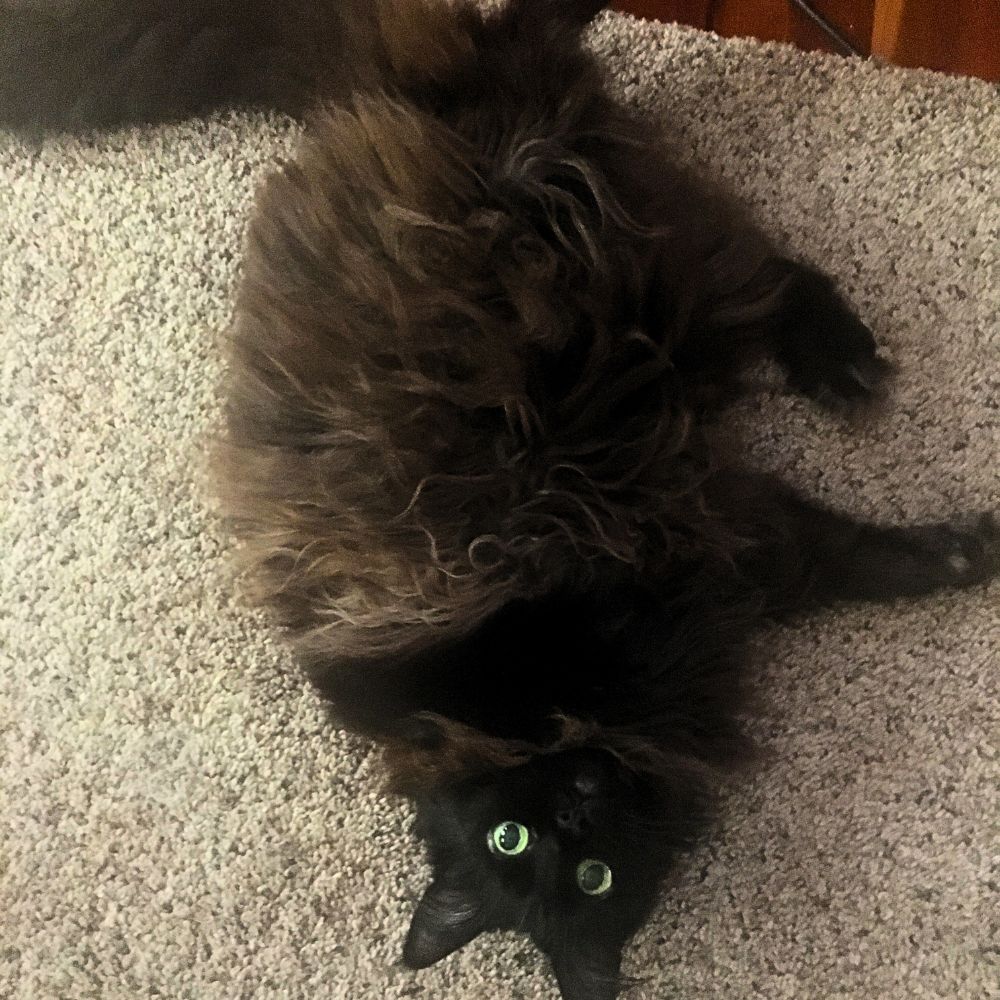 Alice
AliceIt was one of those "well, I’ve never thought of that!" moments. We often get offers for nail trims and other little grooming touches at vet visits, especially with how easygoing Maine Coons can be.
I'd never heard of trimming around the bum before, but the vet explained how it could help keep things cleaner and more comfortable for Alice.
At first, I wasn’t sure - was it really necessary? But once I gave it a try, I noticed a difference. Keeping her neat and tidy in that area helped prevent matting and made her more comfortable overall.
It definitely wasn’t for aesthetic reasons - (she actually looked a little bare down there after), but it really did make a difference in her grooming routine and comfort.
Since then, I trimmed her from time to time, and it became a regular part of keeping her healthy and happy.
There was a great discussion we had recently in our Coonie Clan.
One member shared that her Maine Coon started having issues with poop getting stuck to her hindquarters around seven months old, which is a pretty common time for long-haired kitties to start experiencing this as their fur fills in.
Another member suggested a cat sanitary trim, something she'd had done at the vet for her own Coonie, and it turned out to be the perfect solution.
I thought it would be a great idea to write more about this specific grooming practice!
If you’ve been curious or wondering whether it’s something to consider for your own kitty, here’s why it’s worth it!
What is a Cat Sanitary Trim?
A sanitary shave is exactly what it sounds like - a trim designed to keep your pet tidy in those areas that can be a bit tricky to maintain, especially when it comes to cleanliness.
It's not about a full grooming session but a more targeted trim around your kitty’s bottom. This area can sometimes get neglected in regular brushing or grooming routines.
For many long-haired pets, including some breeds known for their thick coats, the fur around their private areas can easily become matted or tangled. Quite commonly, you may discover a piece of poo hanging on.
This can lead to discomfort, odors, or even health issues like urinary tract infections.
That’s where the sanitary trim comes in - by keeping the bum clear of excess hair, it helps prevent these problems and keeps everything more comfortable for your Coonie.
Hygiene shaves are a simple practice that can make a big difference in your pet’s hygiene.
Many owners don’t think twice about trimming the fur on their kitty's paws or around their face, but the areas around their rear end, privates, and sometimes even the belly are often overlooked.
A cat sanitary trim isn’t a "one-size-fits-all" grooming solution, though. Some pets might need it more often than others, depending on their coat type, activity level, and natural grooming habits.
For example, long-haired breeds might need more frequent trims, especially during shedding season or if they’re not as diligent about cleaning themselves.
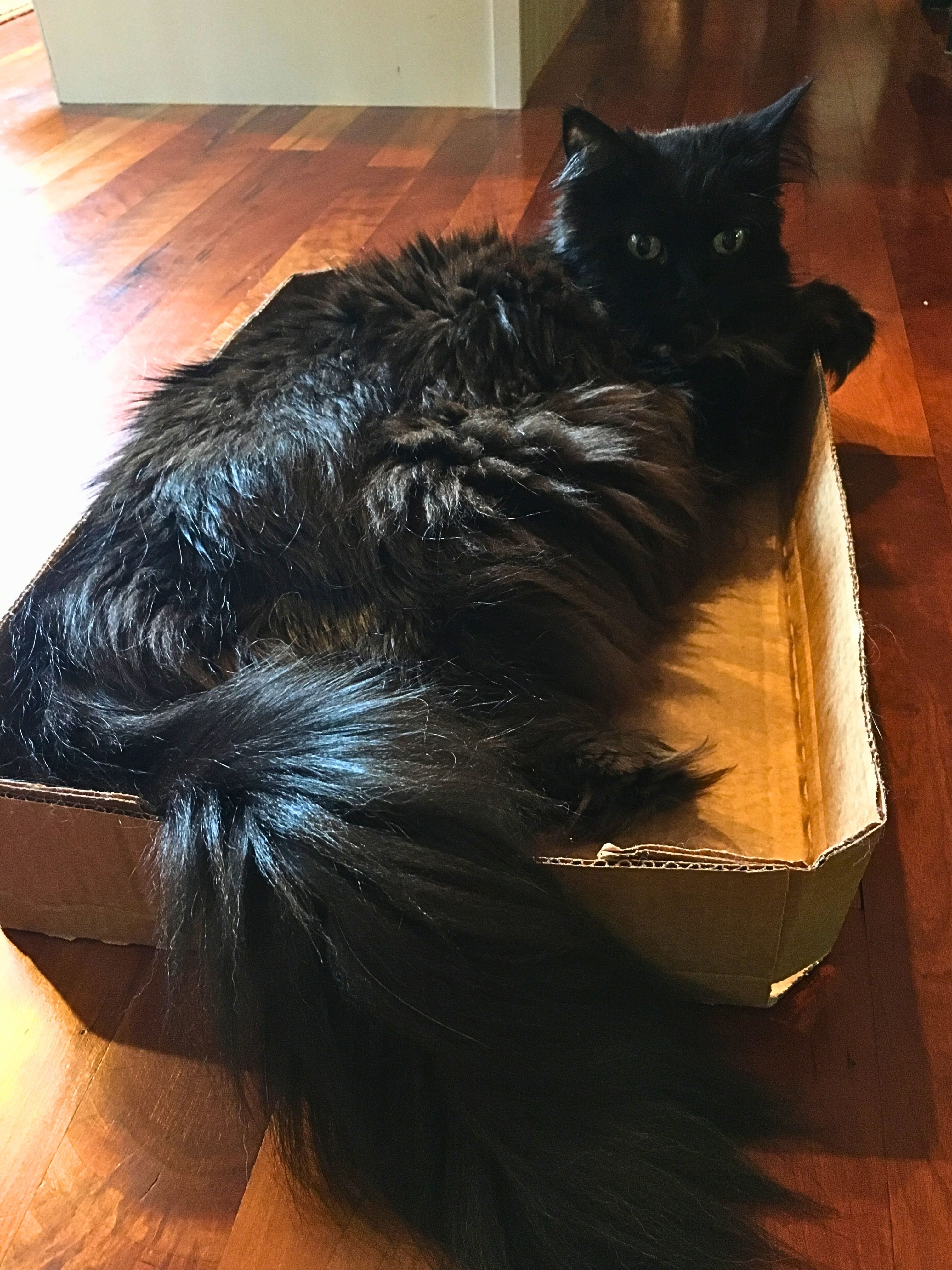
You can always ask your vet about whether a trim is necessary or even if it’s something you should be doing at home.
I remember when I first started trimming Alice in those areas, I wasn’t sure where to begin.
The vet offered helpful advice and even showed me how to safely go about it, which made the process a lot easier.
Can long fur around the bum really lead to UTI's?
Yes, long fur around the hindquarters, also affectionately called "bloomers," can contribute to urinary tract infections (UTIs) in some cases.
When the fur around the rear end is not kept clean and trimmed, it can trap moisture, urine, and bacteria, which creates an environment where infections can thrive.
In particular, urine that doesn’t properly dry or is left to accumulate on the fur can irritate the skin, leading to infections in the urinary tract.
Maintaining cleanliness around your cat's hindquarters is crucial for UTIs. Improper hygiene, such as fecal matter entering the urethra, can introduce bacteria into the urinary system, leading to infections. [1]
Long, matted fur can also obstruct the natural flow of urine or make it harder for your Coonie to clean herself properly, which increases the risk of bacterial buildup.
Regular grooming, including trimming the fur around sensitive areas (a cat sanitary shave), helps with proper hygiene, reducing the chances of infections and keeping your Coonie comfortable.
If you're noticing frequent UTIs or other hygiene-related issues, it's always a good idea to consult with your vet to rule out underlying causes and get advice on how to improve your pet’s grooming routine.
If you’re considering this for your own pet, the next question is - when is it needed? That leads us to…
When and How Often Should It Be Done?
How often you need to trim your pet depends on their grooming habits and coat type.
For most cats, a sanitary shave is something you can do on an as-needed basis - typically once a month or whenever you notice excess hair, matting, or any hygiene concerns around their private areas.
For pets that are particularly active, this could be more frequent.
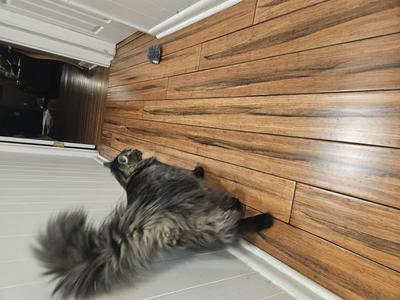 Milo, from our 2025 Album of Mixes & Maybes
Milo, from our 2025 Album of Mixes & MaybesLong-haired breeds, such as those with thick or longer coats, might need more frequent trims.
These kitties can accumulate more tangling and matting, especially in the areas that are hard for them to clean effectively on their own.
Older pets or those with mobility issues may not groom themselves as thoroughly, so trimming might become more necessary to maintain their hygiene.
If your pet is less active or doesn’t groom as regularly, you may want to keep an eye on these areas and trim a little more often.
Regular grooming and a full-body trim (if your pet's coat type needs it) could help avoid some of these issues and reduce the frequency of specific trims.
A simple check every couple of weeks will help you assess if the trim is still holding up or if it's time to refresh.
Step-by-Step Guide to Doing It Yourself
Trimming around your pet’s private areas isn’t as tricky as it sounds, but it does require a little patience and care. Here’s how you can safely do it yourself:
1. Prepare the Right Tools
Make sure you have the proper tools, like grooming scissors or clippers with rounded tips to avoid accidents.
Opt for scissors that are specifically designed for pets, which are generally safer and easier to handle.
If using clippers, make sure they are quiet and have a safety guard to prevent trimming too close to the skin.
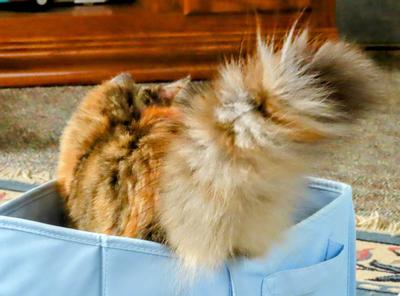
2. Create a Calm Environment
A calm environment is key. Make sure the room is quiet and free from distractions. It's always a good idea to start with a little light brushing or petting to help them relax before moving on to trimming.
3. Start Slowly
Gently lift the area you’re trimming, and trim small sections at a time. Work with your kitty’s natural body movements, and be sure to stay as gentle as possible to avoid any stress. It’s better to take your time than to rush through.
4. Safety First
Always be cautious around sensitive areas. Never pull on the hair, as this could cause discomfort or skin irritation.
Hold the area of fur you’re trimming gently, and use slow, deliberate cuts. If you’re unsure about any part of the trim, take a break and come back to it.
5.Distraction and Reward
Some pets may find the process uncomfortable or stressful. To help keep your kitty calm, use treats or distraction techniques, like their favorite toy or a calming pheromone spray, to make the experience more pleasant.
Giving them a small treat after the trim helps create a positive association with the grooming session, making future trims easier.
Remember, if you’re ever unsure or your pet is particularly sensitive, it’s always a good idea to reach out to a professional groomer for assistance.
Why Not Just Leave It?
This can depend on the thickness and length of your Coonies bloomers.
In some cases, you could leave it! In others, this could lead to several issues, including discomfort, odors, and even infections.
The longer the fur is left unmanaged, the more likely it is for bacteria and urine to build up, which can cause irritation or more serious health problems.
Not to mention, tangled or matted fur can be painful for your pet - and sticky pieces of poo are no fun!
Luckily, trimming these areas isn't as complicated as it sounds. It’s a quick and simple step that goes a long way in preventing bigger problems.
A small effort now will save you from costly vet visits later and keep your pet comfortable.
A cat sanitary trim around the bum is an easy way to improve your pet’s hygiene and overall comfort.
It helps prevent infections, reduces odors, and keeps things clean in sensitive areas. Whether it’s a routine part of grooming or an as-needed fix, it’s well worth the effort.
If you haven’t tried it yet, give it a go and see the difference it can make for your pet’s comfort and cleanliness!
From Our Community:
On our page about poop getting stuck in fur, Ann from Washington State shared her experience with "dingleberries:"
"She uses the litter box, and a while later, I find a pea-size piece of fresh fecal matter within yards of the litter box.
She isn't pooping outside the litter box, but I suspect her long fur is snagging things when she uses it.
I've heard of "sanitary shaving/trimming of longer haired cats' rear ends.." Ann shares.
And on another post, Becky from Oklahoma asks: "My little man came to us 4 weeks ago. He is currently exactly 13 weeks old. He still has a messy back end after urinating in his litter box. Anybody else’s baby suffering from yucky "trousers" after a visit to the litter box?"
If you're dealing with similar issues, a hygiene trim might be the solution you’re looking for!
« Back to Maine Coon Grooming
[1] Reference: Miller, M. B. (2020, May 7). How to prevent urinary tract infections in cats. FetchFind Blog. https://www.fetchfind.com/blog/how-to-prevent-urinary-tract-infections-in-cats/
